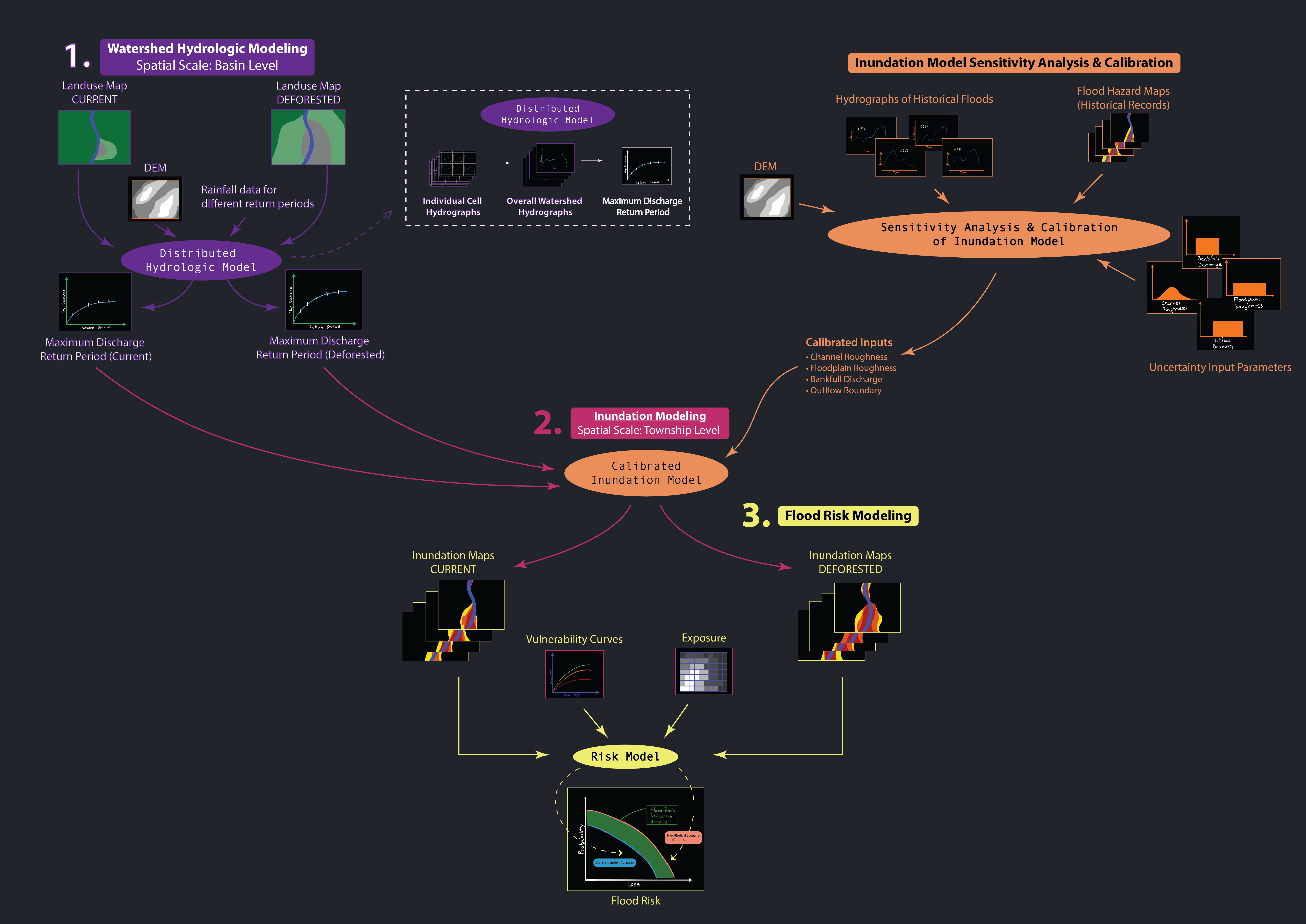Ecosystems Services for Flood Risk Reduction:
A framework and case study for data-scarce study areas
Floods are the most frequent and costly among all natural hazards, and flood-induced losses are expected to grow, driven simultaneously by climate-change and land-use conversion. While it has long been known that natural ecosystems can play a significant role in mitigating the risk of flooding, few tools exist to quantify these protective benefits, especially in data-poor contexts.
As such, flood risk management insufficiently takes into account the role of landscapes and natural infrastructure.
In practice this means that
1) large-scale natural ecosystem depletion does not account for associated increase in flood-risk and the resulting impacts,
2) conservation efforts promoted through ecosystem services calculations often underestimate the true benefits by ignoring flood-protection capacity of natural ecosystems, and
3) flood mitigation measures are biased towards “grey infrastructure” whose protective capacity are easily calculated with engineering software.
This study aims to provide a standardised probabilistic flood risk analysis framework, with a robust and comprehensive hazard modeling process that can be used in data scarce areas, to allow users to analyse the contributions of green/natural infrastructures to flood risk mitigation. The framework aims to faciliate the cost-benefit analysis of nature-based solutions, and better comparisons between green and grey flood mitigation infrastructure.

Poster
Our preliminary findings were presented at the Earth Observatory of Singapore (EOS) Annual Meeting to the Scientific Advisory Board.
Find the full resolution poster here
Acknowlegements
This project is funded by the Singapore National Research Foundation (NRF) and an Environmental Ventures Project grant from Stanford University, and supported by the Earth Observatory of Singapore (NTU).


